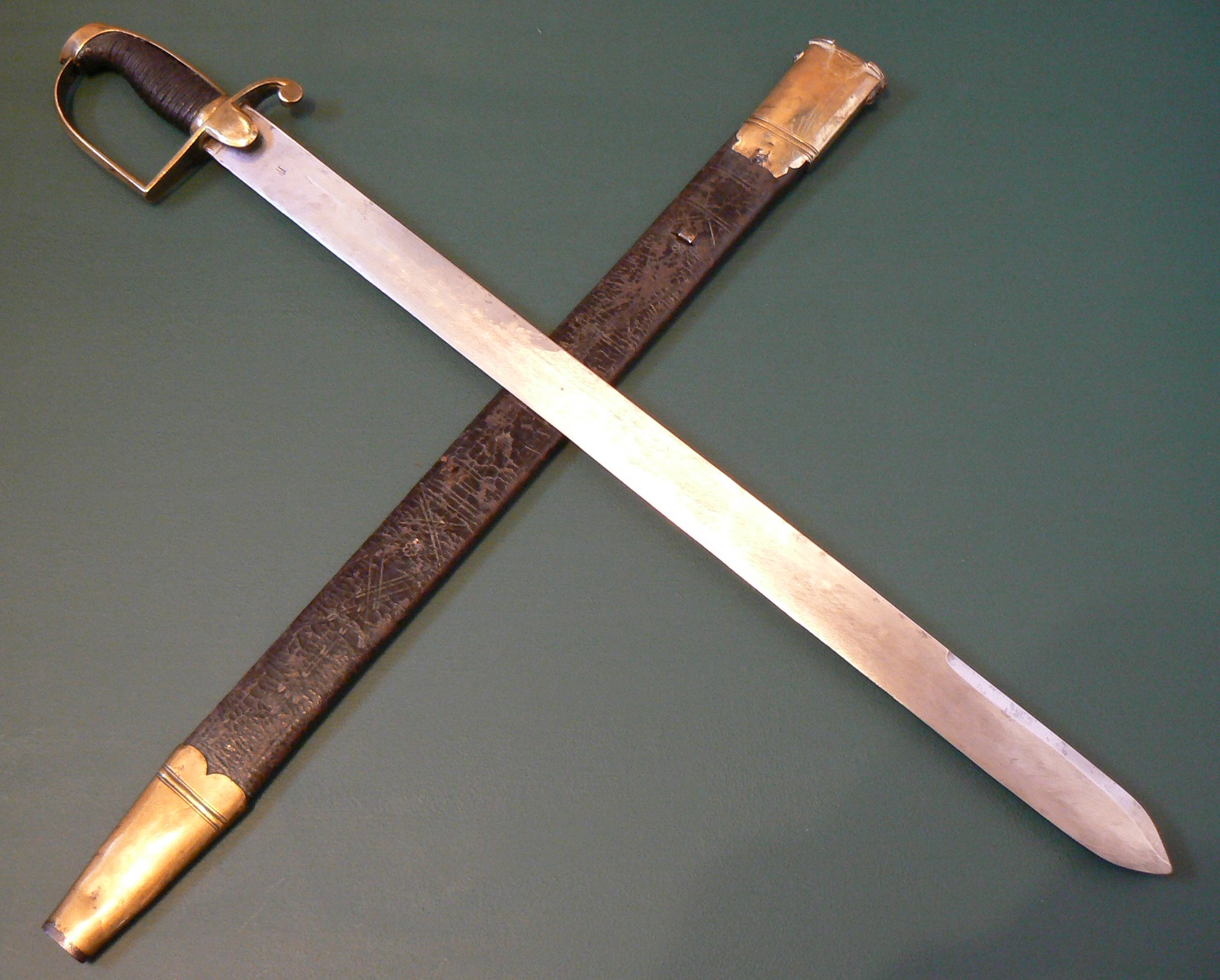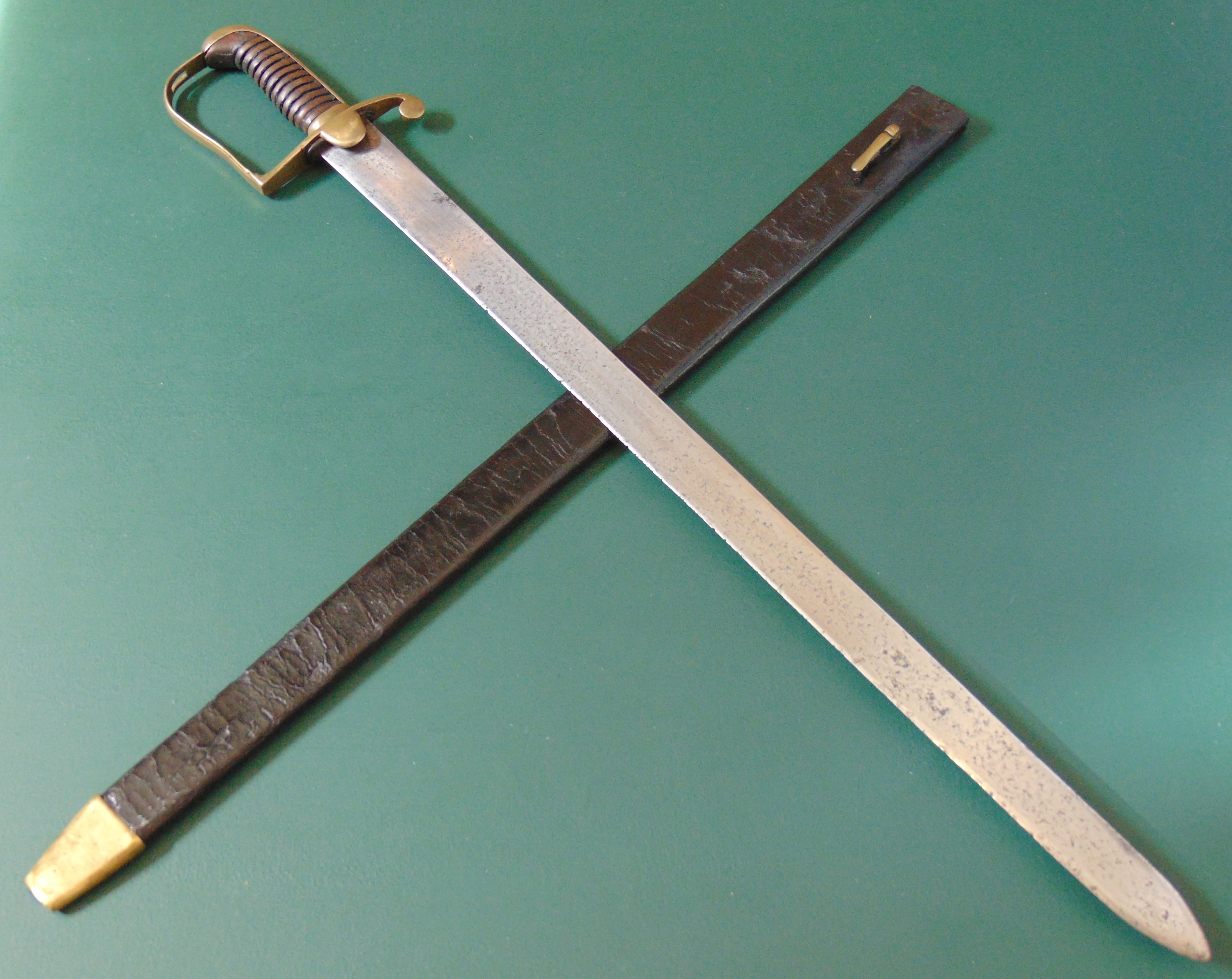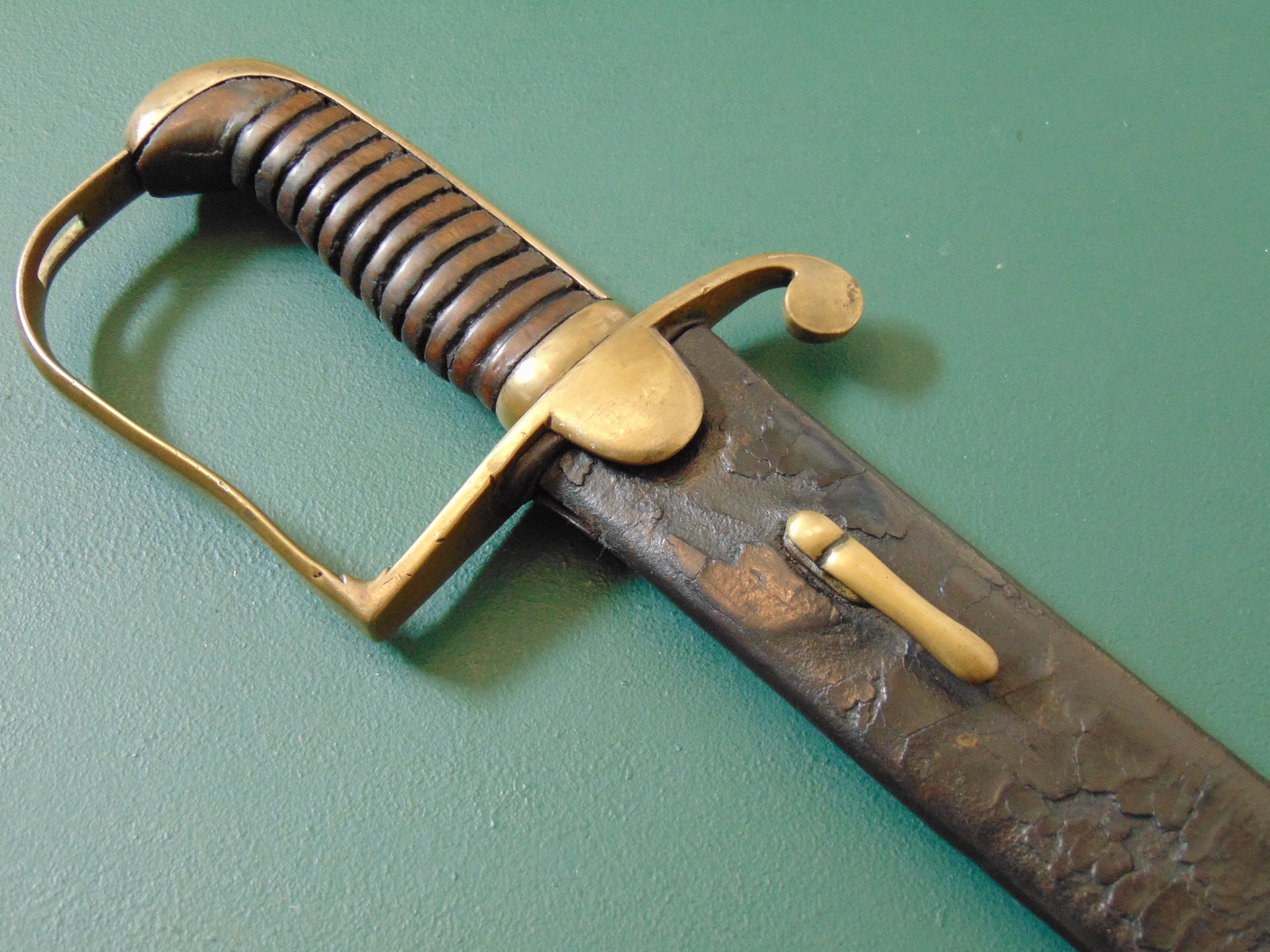A Comparison Between Peninsular War Artillery Gunner's Short Swords
Posted: 12/05/20 (14:02pm)Yesterday I added a short sword to the website that I initially identified as being an early Napoleonic Wars period British artilleryman’s hanger. You can view it in the “Newly Added” section of the website. By early I meant that it was made a few years before the Osborn made hanger that I also have on the website and which dates to between 1800 and 1807. At first glance the two swords are very similar.


Osborn Artilleryman's Hanger 1800-1807
AH1 Unmarked Artillery Hanger
AH2
After time in the hand, and having studied them closely, I now think that the newly added sword is actually a refinement of the original and not a predecessor. I must admit that the scabbard threw me. But let’s set the scabbard aside for now and come back to that later.
An examination and comparison of the swords themselves suggests that the hanger made by Osborn is the earlier of the two. You can view the Osborn hanger by following the link below.
https://www.bygoneblades.com/buy-british-napoleonic-wars-artillery-gunners-short-swordThe Osborn hanger is dateable to between 1800 and 1807. The second hanger (let’s call it AH2 and the Osborn AH1) was probably made after gun crews gave battlefield feedback.

AH1 below. AH2 above.
Let’s look at some stats:
Sword Dimensions AH1 AH2 Total length 754mm 785mm
Weight 1020g 775g
Blade length 635mm 665mm
Point of balance 165mm 135mm
Spine thickness
at shoulder 10mm 8mm
Spine thickness
at midpoint 6mm 3mm
Blade width
at shoulder 37mm 37mm
Blade width at
convergence to point 34mm 29mm
Upper false edge 145mm N/A
As you can see, the Osborn made hanger, AH1 is a much heavier sword with a shorter, thicker blade. It is a very blade-heavy and unwieldy weapon. With a sharpened edge it would have been a devastating cleaver but slow to recover to guard, meaning a missed cut would throw the wielder off balance and leave them open to a counter attack by their opponent. It would also have been poor in the thrust. Hanger AH2 by comparison is longer, better balanced and significantly lighter while still having the width and weight to afford a devastating cut. The sharpened spear point is also thin enough to deliver a reasonable thrust – albeit probably not through a thick woollen tunic.


AH1 below. AH2 above AH2 AH1
AH2 is a far better fighting sword, it is lighter and faster in the hand, its shorter point of balance and better distal taper enabling a faster recovery from cut to guard and from cut to thrust. These improvements are almost certainly as a result of feedback from the field.
The fighting style of enlisted gun crews was probably more akin to frantic slashing and hacking than schooled swordsmanship, and the reduced weight and improved balance of AH2 would definitely have afforded them a better chance of surviving a close quarter fight.
In January 1809, after retreating from Napoleon’s Army of Spain, General Sir John Moore’s 35,000 men fought heroically against Marshal Soult at the Portuguese port of Corunna. Despite winning, they suffered heavy losses (including Sir John Moore) and were shipped back to England.
Reinforced and re-equipped, the British army returned to Portugal in May 1809 under the command of Sir Arthur Wellesley (later The Duke of Wellington). I believe that improved Artillery hangers like AH2 would have been issued to gun crews of the returning army.
Artillery hanger AH2 is without maker or military ownership marks, but this is not unusual. The need for equipping the troops for the return to the Peninsular superceeded inspection and acceptance marking. It is also possible that the absence of a Crown ordnance stamp means that the hanger was purchased by one of the volunteer battalions raised at the time and was therefore not the property of the Crown.
So now let’s address the scabbards.

AH2 Scabbard without brass throat and with an elongated frog stud.
Initially, the construction of the scabbard belonging to AH2 led me to believe that it was an earlier model than AH1. The lack of a metal throat and the elongated frog stud in particular appear to harp back to an earlier age. So could it be the wrong scabbard for the sword? It is certainly possible. But I don’t think so. The fit to blade is excellent so I am pretty sure that the scabbard was made for this hanger. I think the answer lies in the period in which these weapons were made and used.
In Georgian England, a regiments’ commanding officer was responsible for arming and equipping the men under his command. He was given an allowance from the Crown and free reign to choose from whom he purchased. Numerous manufacturers were involved in the fabrication and supply of weapons and each would have had slight variations on patterns and options on quality and price. It was not uncommon for commanding officers to try to reduce costs in order to pocket the difference. Leather scabbards without brass throats with smaller and less ornate chapes would have been by far the cheaper option.
So in conclusion, I now believe that artillery hanger AH2 is of later production than hanger AH1 albeit by only a few years, and that the apparently earlier period scabbard of AH2 is in fact simply a cheaper, while perfectly serviceable option.
AH1 and AH2 are both very rare and were in service during the Peninsular and Waterloo. An ideal opportunity to grab yourselves a piece of history!




